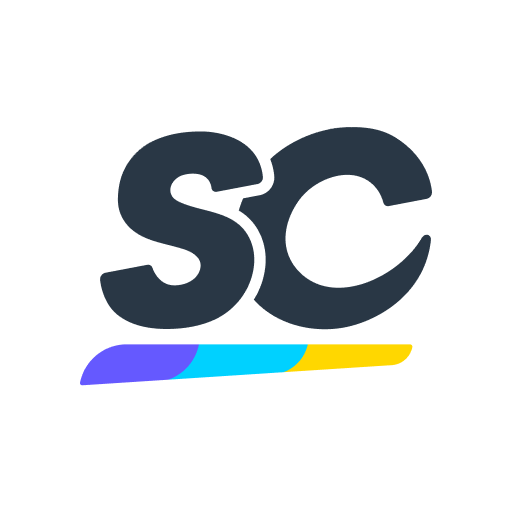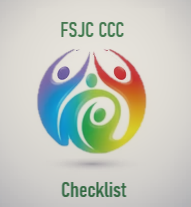Title Page
-
Site conducted
-
Conducted on
-
Inspected By
-
Accompanied By
-
Location
-
Inspection Code: <br>Yes - Meets Standard<br>No - Does Not Meet Standard<br>Not Reviewed
Sign Off
-
Name and Signature
Environmental Safety
-
Are daily cleaning and sanitation procedures being followed and documented? <br>29 CFR 1910.141; 29 CFR 1926.51; 29 CFR 1928.110; OSHA guidance on Mitigating & prevention of COVID-19 updated 06-10-21
-
Is the area free from clutter with materials properly stored safely to prevent tripping, fire or pest hazards? <br>29 CFR 1910.22; 29CFR 1926.25; FSH 6709.11 38.33
-
Are garbage cans intended for disposing of food emptied daily and outfitted with solid tight-fitting covers?
-
Are wiping cloths clean, stored properly?
-
Are floors free from damage, holes or cracks? <br>CFR 29 1910.22
-
Are ceilings free from holes or missing tiles? <br>1910
-
Are overhead lights working and protected from breakage? <br>CFR 29 1910.269
-
Are utensils and equipment clean, in good working order and stored properly?
-
Are spills cleaned up promptly?
-
Are all food areas free of evidence of insects or rodents? <br>CFR 21 Food Code FDA Codebook 2017 Controlling Pests 6-501.11
-
Do staff and student practice proper hygiene? (Clothes clean, no jewelry, hair restrained etc.) <br>CFR 21 Food Code Employee Health and Personal Hygiene Handbook
-
Is the area free from damaged, worn or unsafe messaging?
Restroom Facilities
-
Are toilets and washing facilities clean and stocked with supplies (soap, towels, toilet paper)? FDA Codebook 2017 Handwashing signage 6-301.14; CFR 21
-
Are fixtures in toilets and washing facilities working and in good repair?
-
Are tiles clean and free from damage?
-
Are showers, sinks and toilets free from leaks?
-
Is there evidence of mold or mildew?
Storage
-
Are storage racks tightly assembled and free of sagging from overload or damage?
-
Are storage areas kept free of tripping and fire hazards?
-
Are materials stored to ensure liquids are kept away from/below paper products?
-
Are dry storage rooms/areas organized and clean with no food stored on the floor?
-
Do employees have a safe way to stock and unstock the shelves?
-
Are grease containers appropriate and grease collection is at an acceptable level? <br>CFR 21 Food Code FDA 2017 5-402.12 Grease Trap.
-
Are cleaning supplies properly labeled?
-
Are mopping supplies properly cleaned and stored?
Hazardous Chemicals
-
Are eyewash stations serviceable, inspected, not blocked, signposted, tested weekly, and signed off? <br>NFPA 101; ANSI Z358.1 Sec 5.5.2; CFR 29 1910.132
-
Are all containers of hazardous materials clearly labeled with their contents? <br>CFR 21 Food Code FDA 2017 Annex 4, Table 2b. Added Chemical Hazards at Retail, Along with Their Associated Foods and Control Measures
-
Are all chemicals stored according to the manufacturer’s recommendations and local or national fire codes.
-
Are all employees & students required to use personal protective clothing and equipment (gloves, eye protection, etc.) when handling chemicals?
-
Are employees prohibited from eating in areas where hazardous chemicals are present?
-
Is personal protective equipment provided, used and maintained whenever necessary?
-
Are there procedures in place and being followed for obtaining and returning hazardous chemicals?
-
Are Safety Data Sheets (SDS) available, up-to-date and students can demonstrate their use?
Electrical Safety
-
Are extension cords used only for temporary use with correct voltage and rated for usage? <br>CFR 1910.269
-
Are power cords free of splices, taps, and damaged insulation?
-
Is daisy chaining present?
-
Are live electrical parts on tools, equipment, building wiring, and electrical panels enclosed to prevent contact?
-
Do circuits become overloaded? If so why?
-
Are breaker boxes clear and can they be accessed?
-
Are electrical GFCI outlets used in wet locations? <br>29 CFR 1910.334; 1910.304; 1926.404
-
Do electrical cords and equipment used at wet locations have waterproof covers or seals to keep moisture out?
-
Are lockouts/tagouts used as needed to control hazard energy? <br>29 CFR 1910.147
-
Are all outlets and covers in good repair?
First Aid
-
Are first aid and blood borne pathogen kits available, accessible and stocked using a list of required items posted? CFR 1910.151(b), 1926.50( c ), ANSI/ISEA Z3-8.1, 1910.151 , 1926.50(d)(1), PRH Exhibit 5-4
-
Are the AED machines inspected to ensure good working order with current batteries and pads (not expired)?
Fire Safety
-
Are all fire extinguishers present in their correct location? PRH-5.9-R5.a-f ; CFR 1910.157(c)(4) NFPA 10
-
Are all extinguishers hung or stand mounted, unobscured, unobstructed and freely visible? CFR 1910.157 (c)(1) NFPA 10
-
Do all fire extinguishers with pressure gauges show correct pressure? <br>PRH 5.9-R5.a-f; CFR 1910.157.(c) (4) NFPA 10
-
Are all extinguishers free from signs of corrosion (incl. tap-test)? <br>PRH-5.9R5.a-f; CFR 1910.157(f)(2)(iii) NFPA 10
-
Are alarm pull stations and smoke detectors in good working order? <br>CFR 29 1910.164
-
Are fire extinguishers tagged, serviced and inspected by the building manager or designee? CFR 29 1910.157( c )(1), NFPA 10
-
Is the fire alarm panel in good working order? <br>NFPA 72 NFPA 70 29 CFR. 164-165; 1926.150
Escape Routes/Exits
-
Are occupancy loads posted with adequate exit discharge routes that lead outside? 1910.36 (c)
-
Are exits clearly marked and well lit?
-
Are escape routes clear and free from debris and obstruction? CFR 1910.37(a)(3) ;NFPA 101B
-
Are all internal fire doors closed (not wedged open)? <br>NFPA LSC 19.3.6.3.10
-
Are exterior exit doors clear and unobstructed on both sides? <br>CFR 1910.37 (a) (3)
-
Do exterior exit doors open easily from the inside without a key? CFR 1910.36 (d)(1)
-
Are external pathways from the exits away from the building clear? CFR 1910.37 (b) (4) 1910.37 (d) (1)
-
Has the area documented a safety drill in the past 30 days?
Food Safety
-
Do potentially hazardous food meet temperature requirements during storage, preparation, display, service, and transport? <br>CFR 21 Food Code FDA 2017 3-202.11; Applicable Sections of Parts 3-4 & 3-5
-
Thawing meats stored6” off ground?
-
Is food properly dated and documented for rotation control?
-
Are thermometers provided and conspicuous? <br>CFR 21 Food Code FDA 2017 4-204.112
-
Are food and ice dispensing utensils properly stored? <br>CFR 21 Food Code FDA 2017 3-304.12 In-Use Utensils, Between-Use Storage.
-
Are ServSafe Certificates posted in visible location?
Food Service Sanitation
-
Are food contact surfaces adequately designed, maintained, and located? <br>CFR 21 Food Code FDA 2017 4-202.11 Food-Contact Surfaces.
-
Are sneeze guards clean?
-
Are non-food contact surfaces adequately maintained and located? <br>CFR 21 Food Code FDA 2017 4-202.16 Nonfood-Contact Surfaces
Dishwashing
-
Are dishwashing chemical ratios and temperatures checked and documented - temps at 165 for wash and 185 for rinse?
-
Are three compartments sink properly installed and used with an adequate supply of pH paper and sanitization test strips? <br>CFR 21 Food Code .4-301.12 Manual Warewashing, Sink Compartment
-
Are dishwashing test strips and heat-sensitive tapes being used and not expired?
-
Do water sources provide hot and cold water with adequate pressure and temperatures?
Hoods
-
Are hood filters washed weekly?
-
Are hoods cleaned according to HAACP stickers?
-
Are cooking devices properly placed under suppression system?
Temperature Controls
-
Is food stored and labeled properly in walk-in freezer?
-
Condensing units are free from ice buildup?
-
Is food stored and labeled properly in walk-in cooler?
-
Are temperature logs up-to-date and displayed properly?









